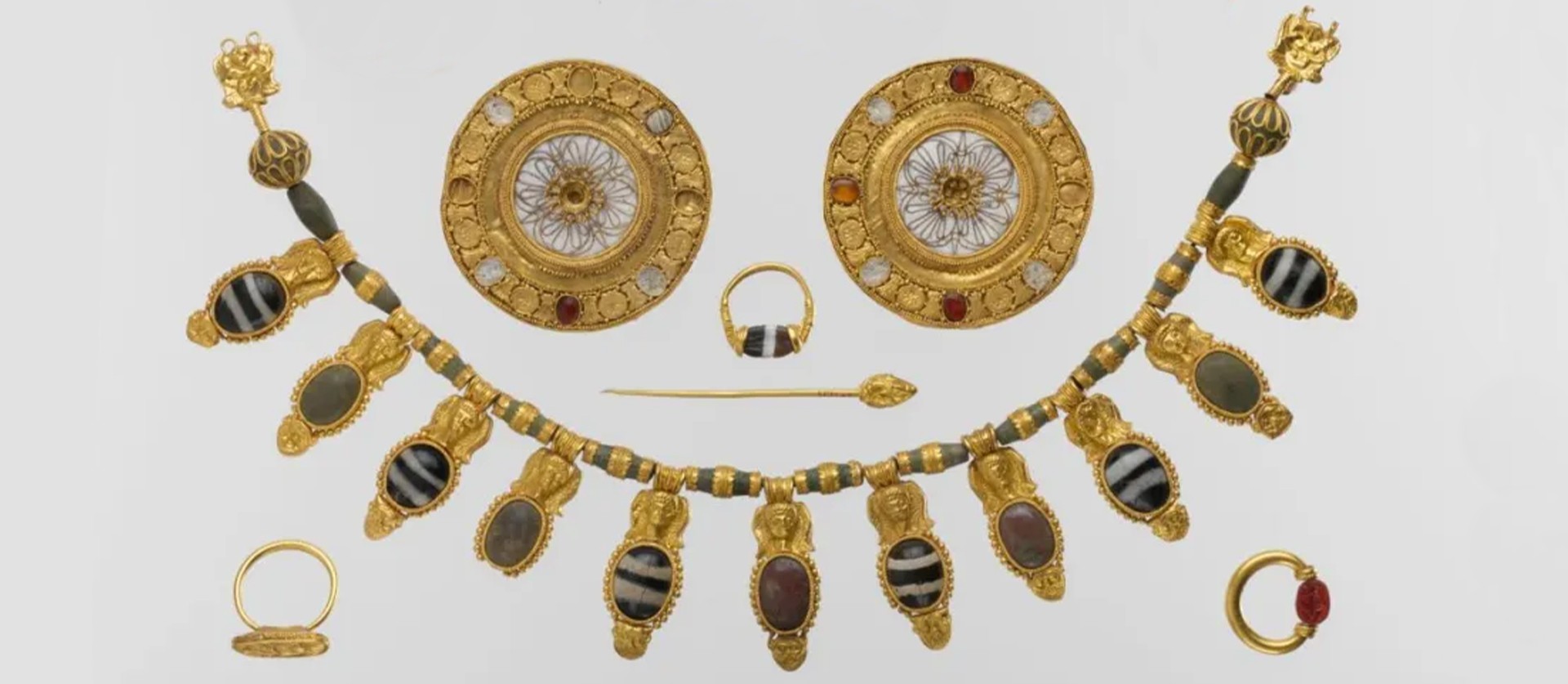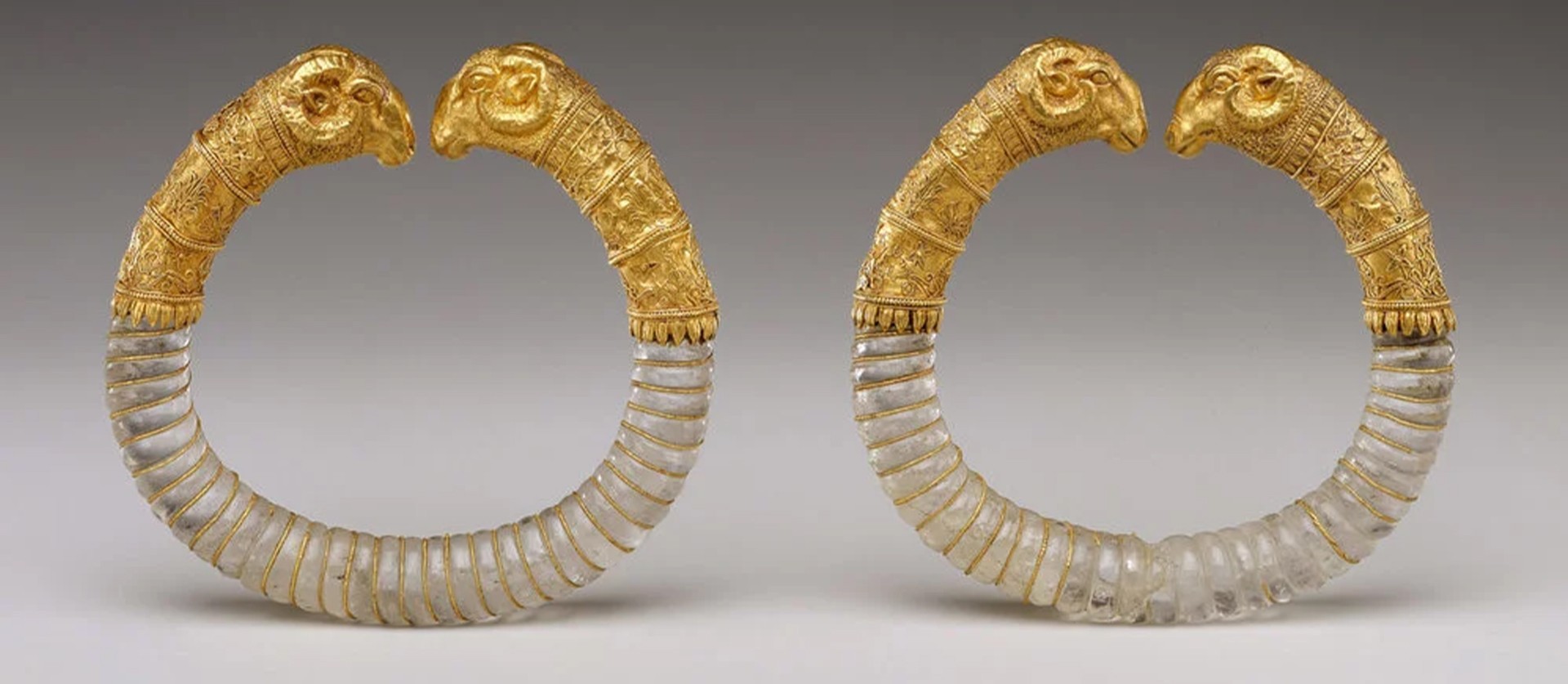Jewelry in Ancient Greece: between Nature, Mythology and Refinement

Although they may be less well-known than the celebrated works of classical sculpture and architecture, jewelry in ancient Greece also played an important role as witnesses to Greek art. And like every artistic manifestation, goldsmith objects are also closely linked to the historical period in which they were created.
The Evolution of Jewelry in Ancient Greece
The most Ancient Ornaments between Nature and Geometry
The first precious objects, as attested by archaeological findings, date back to the Minoan age, the civilization born on the island of Crete during the Bronze Age period. In this era (which takes its name from the mythological king Minos) the Cretans, a people of maritime merchants, imported metals from various areas of the Mediterranean, such as Cyprus, Syria and Asia Minor. Jewelry was made primarily of gold, but silver, tin and copper were also used. Necklaces, bracelets and rings – worn by both women and men – evoked nature: the preferred subjects were flowers and plants, but also bees, hornets and beetles.
Geometric motifs arrived in jewelry in ancient Greece thanks to the Mycenaean civilization, born around 1600 BC in the city of Mycenae. The Mycenaeans were a people of warriors: among the jewelry found are swords with rich decorations and funeral masks in gold. In their ornaments they added geometric forms such as spirals, stars and crescents to naturalistic themes.

Jewelry in Ancient Greece of the Classical Age
The classical period (5th-4th century BC) was that of the maximum splendor of Greek culture and therefore also of every form of art, from literature to sculpture, to architecture. It was the period of the polis, the city-states, which placed community life at the center of everything, and this mentality had an important reflection also in the creation of jewelry. Private jewelry, in fact, was simple and linear, almost always without precious stones; the most frequent subjects were mythological figures. A testimony to the style of these jewels is in the decorations of vases from the era, which often portrayed female figures with diadems, necklaces, bracelets and earrings. In this period jewelry from ancient Greece, although simple, was nonetheless refined in its crafting techniques.
In temples, however, there were numerous statues of gods in gold and ivory, decorated with precious stones, intended for the worship of citizens of the polis. These precious statues were also a representation of the city’s wealth.
The Elaborate and Magnificent Style of the Hellenistic Age
With the vast empire created by Alexander the Great, in the Hellenistic age (4th-2nd century BC) Greek culture spread toward Asia and came into contact with new civilizations. Art was greatly influenced by this and goldsmithing as well: from the East came new metals and precious stones and new decorative styles. Jewelry became increasingly refined and elaborate, both in craftsmanship and in chromatic details, given by the abundance of colored stones such as emeralds, rubies, amethysts, carnelians. Richer decorations appeared on ornaments, inspired by mythological characters and stories. In the last period of Greek history, before the Roman conquest, jewelry in ancient Greece became the symbol of a social status of wealth and magnificence, imitating the lifestyle of Eastern princes.
Materials and Goldsmith Techniques in Ancient Greece
The precious metals used by the Greeks came mainly from Asia Minor (present-day Mediterranean Turkey), where many Greek colonies had existed since the 6th century. From here came gold, the most appreciated metal, but also silver and electrum, a natural alloy of gold and silver, which in ancient times was very abundant and was also used to mint coins.
The crafting techniques of jewelry in ancient Greece were already advanced even in the most archaic periods: from the Minoan age repoussé, chasing and granulation were known, already widespread among the Egyptians and then perfected by the Etruscans.
With the arrival of precious stones from the East, the Greeks also learned the art of carving them. The first cameos thus spread, created especially by engraving sardonyx, a variety of quartz with alternating red and brown layers. On many men’s rings were set carved stones used as seals for documents.